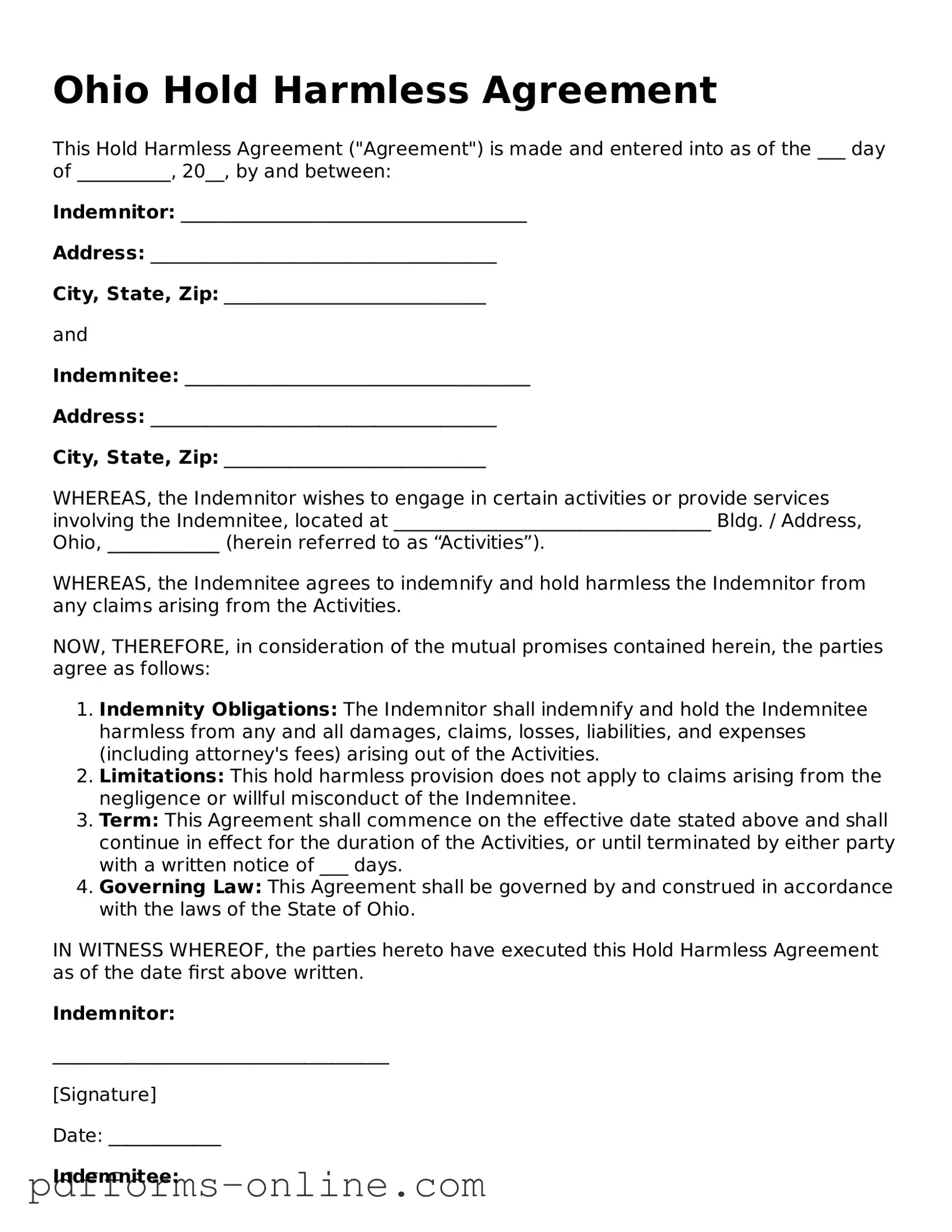Ohio Hold Harmless Agreement
This Hold Harmless Agreement ("Agreement") is made and entered into as of the ___ day of __________, 20__, by and between:
Indemnitor: _____________________________________
Address: _____________________________________
City, State, Zip: ____________________________
and
Indemnitee: _____________________________________
Address: _____________________________________
City, State, Zip: ____________________________
WHEREAS, the Indemnitor wishes to engage in certain activities or provide services involving the Indemnitee, located at __________________________________ Bldg. / Address, Ohio, ____________ (herein referred to as “Activities”).
WHEREAS, the Indemnitee agrees to indemnify and hold harmless the Indemnitor from any claims arising from the Activities.
NOW, THEREFORE, in consideration of the mutual promises contained herein, the parties agree as follows:
- Indemnity Obligations: The Indemnitor shall indemnify and hold the Indemnitee harmless from any and all damages, claims, losses, liabilities, and expenses (including attorney's fees) arising out of the Activities.
- Limitations: This hold harmless provision does not apply to claims arising from the negligence or willful misconduct of the Indemnitee.
- Term: This Agreement shall commence on the effective date stated above and shall continue in effect for the duration of the Activities, or until terminated by either party with a written notice of ___ days.
- Governing Law: This Agreement shall be governed by and construed in accordance with the laws of the State of Ohio.
IN WITNESS WHEREOF, the parties hereto have executed this Hold Harmless Agreement as of the date first above written.
Indemnitor:
____________________________________
[Signature]
Date: ____________
Indemnitee:
____________________________________
[Signature]
Date: ____________
